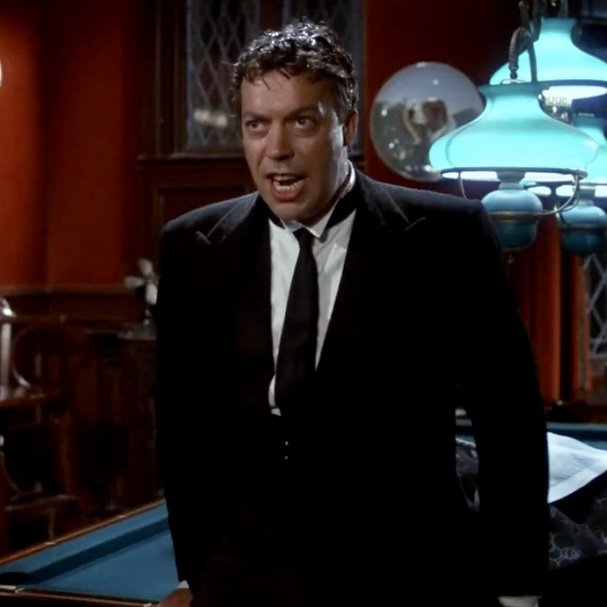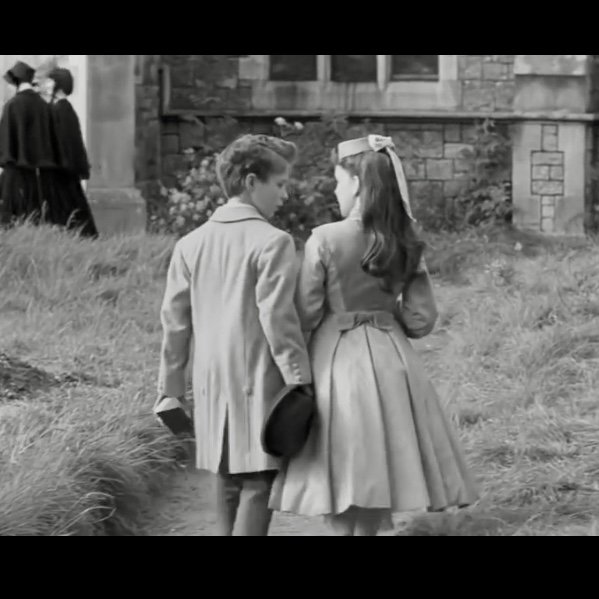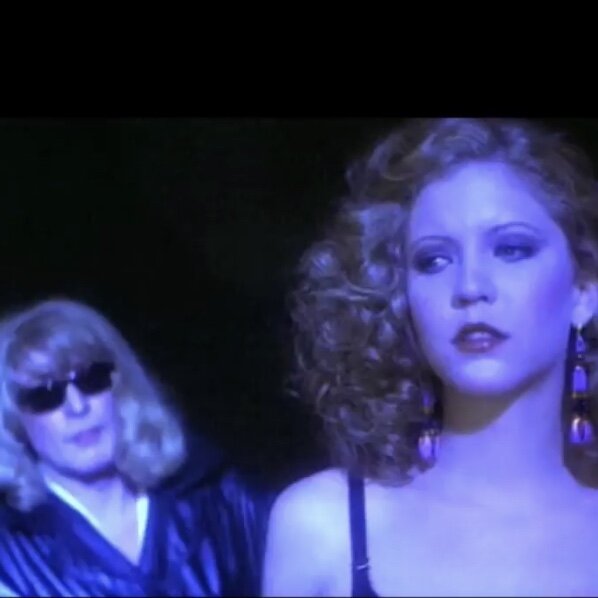Life After Death: The Cult Classic That is Clue
It boggles the mind to think that the 1985 comedic murder mystery, Clue flatlined upon its initial theatrical release. Opening on December 13, 1985, the film, co-conceived by John Landis, and based on the classic Parker Brothers’ board game, was up against The Jewel of the Nile, the sequel to the successful adventure-comedy, Romancing the Stone, with Rocky IV and Landis’ Spies Like Us also continuing to do well commercially. One thing I don’t understand (one thing?): Why Clue didn’t get an October or Halloween-season release-date, considering its murder-mystery genre.
However, with the help of cable television, and the birth of the VHS rental market, Clue was brought back to life by viewers, in their living rooms, with the remote control. From John Morris’ Hitchcockian, Bernard Herrmann-inspired orchestral score during its opening credits, to the solid cast of “colorful” characters that the viewer meets one by one as each arrives at a spooky manor on a dark and stormy night, Clue is “cozy murder” at its best.
The screenplay’s mid-1950’s timeframe allowed the director and screenwriter, Jonathan Lynn, to weave in satirical jabs at McCarthyism, conservative moral codes, even good ol’ fashioned capitalism. But mostly, Clue works because of the sharp lines of dialogue, quickly delivered between characters. Tim Curry’s Wadsworth, the Butler, not only tidies up the kitchen and the dining room, but takes it upon himself (as a workingman’s Hercule Poirot) to neatly wrap up the mystery via a zany, fast-paced, cartoon-caliber reenactment of the evening’s events, where the viewer discovers the whodunit and two other who(could’ve)dunits.
Repeated airings and rentals in the ‘80s and ‘90s, and purchases, of Clue have earned the film a large fan base, to the point where it’s easily reached cult-classic status. In particular, Madeline Kahn’s improvised “flames” monologue is a fan favorite, and probably the movie’s most recited section.
Long story short (too late): Clue certainly proves that just because something doesn’t break box-office records doesn’t mean it’s destined for the bargain bin and into obscurity; with a strong ensemble cast, a witty script full of memorable lines, and the support of a deeply loyal following, a film such as Clue can take on a life (after death) of its own.
“Secretive; Whispery; Indecent”: Intentional Disconnect in 1961’s The Innocents
More gothic folklore than gruesome gore, Jack Clayton’s beautifully haunting (and hauntingly beautiful) 1961 film, The Innocents is high-art psychological horror. Co-written by William Archibald and Truman Capote, the film is based on the 1898 Henry James story, The Turn of the Screw.
Deborah Kerr stars as Miss Giddens, a governess hired to care for two children, Flora (Pamela Franklin) and Miles (Martin Stephens), at an English manor. An unsettling tone is set right from the beginning: Behind the initial screen blackness, pre-opening credits, the sound of a young girl (Flora) singing “O Willow Waly” creates a disturbing blurred line between wholesome lullaby and its mournful lament for a lost lover. The disconnect continues through the opening credits, now with birds chirping in the darkness; those familiar tweets most often heard at daybreak, instead of in the dead of night. And finally, a profile of a distressed Miss Giddens, clutching her hands together, tilting her head back with her eyes closed, her forehead glistening with perspiration; the sight of sweat common in the blazing sunlight, not in the glowing moonlight.
Day or Fright
Throughout the crisp, black-and-white film there are a number of bone-chilling scenes. The manor and its grounds become settings for strange goings-on, ones not solely reserved for the nighttime, when fatigue, shadows and imagination can get the best of someone, but in broad daylight as well, often with others nearby. But what is real, and who is credible? In the film’s first line, a sense of doubt is immediately placed upon the viewer toward Miss Giddens, when the children’s uncle asks her during the interview for the governess position: “Do you have an imagination?” An almost embarrassed Giddens replies with a yes. As the film progresses: To believe or not to believe her, that becomes the subsequent question in the viewer’s mind.
Depth of Fear
The crisp black and white mentioned earlier is the work of the cinematographer, Freddie Francis, who used a deep-focus technique, which allows the foreground, middle ground and background to be equally sharp. One of the best examples is when Flora becomes oddly excited about nature’s brutality. She declares: “Oh look, it’s a lovely spider, and it’s eating a butterfly!” (Spiders aren’t usually described as lovely, creating another example of intentional disconnect.) The large depth of field simultaneously creates distance and claustrophobia for the viewer (a visual disconnect), while also establishing Flora as the spider to Miss Giddens as the butterfly.
Brother and Sinister
In addition to this macabre outlook on nature, mature subtexts run throughout, particularly ones dealing with the misguided affection between Miles and Miss Giddens. After learning more about two of the manor’s previous residents, Giddens begins to suspect the prim, proper, poetic Miles, and the once-sweet now emotionally hysterical, Flora are not who they appear to be, that something evil has entered the innocent (foreshadowed when Giddens admires a stone cherub in the garden, only for a cockroach to crawl out of its mouth).
Giddens conveys to Mrs. Grose, the housekeeper enveloped by extreme denial, that both children “are playing, or being made to play, some monstrous game. I can’t pretend to understand what its purpose is; I only know that it is happening: something secretive, and whispery, and indecent.” (Undoubtedly, Capote-penned prose.)
The relationship between Miles and Flora becomes suspect as well. Flora seems to have a psychic connection to Miles, knowing when Miles will return home from his school, permanently dismissed for bad behavior, even before Miss Giddens or Mrs. Grose. Giddens becomes watchful of the two siblings as they hold hands, walking closely together toward the town church. A concerned Giddens says to Mrs. Grose: “Look at them. What do you think they’re saying?… They’re talking about them; talking horrors.”
And the horrors continue through the film’s dizzying conclusion (or disturbing connection to its beginning, as described earlier), one that is both spine-tingling and heavyhearted, where the secretive becomes communicative, the whispery reaches its crescendo, the indecent once again innocent.
Coppola Mechanism: Francis and Sofia’s Different Portrayals of Loneliness
In between The Godfather and The Godfather Part II, Francis Ford Coppola directed another classic: 1974’s The Conversation. Gene Hackman plays Harry Caul, a San Francisco surveillance expert who delves relentlessly into other people’s lives. Yet after one assignment, which has him initially (just) eavesdropping on a wealthy man’s wife and her male companion, he eventually finds himself trying to save what’s left of his own life. The viewer, funnily enough in an inherently voyeuristic role, sees that it’s not much of a life to begin with (barren loft void of color or personality; awkward attempts at human relations, specifically ones with women). Yet Harry seemingly resounds himself to reclusiveness, a sort of Catholic-induced self-punishment for the guilt that goes along with doing what he knows is wrong.
Coppola’s still-relevant script touches upon themes of technological obsession, voyeurism and paranoia, and its last scene is solemn and unsettling. Slow-jazz saxophone plays over the scene, a disturbingly serene choice to show someone peacefully succumbing to the (literal) mess one has made of his life. While Harry keeps human interaction and emotional involvement at a literal faraway distance, there’s a character in another Coppola creation who wants to intentionally connect with others, but first, with herself.
Partly based on Sofia Coppola’s time in Tokyo during her early twenties, 2003’s Lost in Translation is one of the best at capturing loneliness. The scene when Charlotte (Scarlett Johansson) calls a friend on the phone—a symbol of communication and connection—illustrates yet another way Charlotte feels dismissed and disconnected, not just a stranger in a new city, but worse, in her own life. As she sits alone in her hotel room, high atop and removed from the hustle and bustle of the city below, tearful gasps represent, in more ways than one, a longing to find home. The film’s soundtrack of dreamy, melancholic melodies and fuzzy feedback create a sense of… wander, and at times convey a hopeful reawakening for Charlotte, and actor in mid midlife crises, Bob (Bill Murray), both looking to feel refreshed after spending their lives in a (jet lag) haze.
Although both films are almost 30 years apart, Francis and Sofia show characters who are achingly lonely, yet the main difference is that one feels he deserves to be, the others are desperately trying not to be.
The Conversation: Paramount Pictures; Lost In Translation: Focus Features.
Double Trouble: Reflections on Brian De Palma’s Dressed to Kill
Brian De Palma’s Dressed to Kill is his (graphic) homage to Alfred Hitchcock’s 1960 classic, Psycho: Here’s a list of the some of the referential elements:
De Palma’s film incorporates not one, but two shower scenes;
Its female lead, Kate Miller (Angie Dickinson is to Janet Leigh’s Marion Crane; both characters essentially good women “gone bad”) is the “Hitchcock blond”;
Instead of a shower curtain, an elevator door is the temporary barrier that separates victim from killer, safety from harm, life from death;
Nancy Allen (is to Vera Miles) and Keith Gordon (is to John Gavin) step in as crime solvers;
Allen with a “tall blond” behind her and flickering lightning is to Miles with Anthony Perkins and a swinging lightbulb;
A psychiatrist (David Margulies to Simon Oakland) summarizes personality conflict, arousal and the human psyche.
Sunglasses At Night: Liz (Nancy Allen) and the “tall blond.”
Filmways Pictures. Cinematographer: Ralf D. Bode.
Also take note of duality as a running theme: Spoilers ahead: Besides De Palma’s signature split-screen technique, his script includes a scene where Michael Caine’s Dr. Elliott is on the phone in his office, taking the time to spell out his last name: “E; double l; i; o; double t,” plus there are a number of scenes involving mirrors: Elliot becoming startled when he catches his reflection in a mirror, with another occurrence shown in the trailer below; when Allen’s character, a call girl named Liz, seduces Elliott during a therapy session, he glances down to a mirror on his desk, and smirks devilishly. The audience also learns near the end of the film that there are two “tall blonds,” one with good intentions, the other, as already previously noted.
Although De Palma is certainly influenced by the Master of Suspense, he still manages to add his own visual stamps and a dreamy score by Pino Donaggio to create an enduring film that feels anything but a carbon copy.















